intro: answering the feral call
Oh my gosh hi!! I’m so excited to share these juicy tidbits with all of you aspiring authors, poets, and humans who have a deep desire to share their inner worlds.
If you don’t already know me, I’m Sonja and I’ve written and self-published two collections of poetry. I’m currently working on my third book, due late 2024/early 2025! I suppose this qualifies me to offer insights on such matters, though I’m generally hesitant to give advice. So today I’m going to share with you my experiences in the world of self-publishing, in hopes that it helps you on your path!
Maybe you’ve already stumbled across my books. If not, my first book is a collection of love poems for mother earth titled Where the Beetle Went for Lunch [2021]. My second book, mortal atlas [2022], is a journey through grief and the wild & mysterious nature of existence.
The following steps will apply even if your book is not of the poetry variety, but it will especially apply if you’re an aspiring poet. How do you self-publish a poetry book? This question often slides into my DMs and I don’t know how to respond because the answer is so very long, detailed and nuanced! And I want to be thorough in my reply, but it’s simply not possible to explain in a little DM.. so this guide will now and forever live here, on Substack.
I want you to feel as though, after following these steps, you’re equipped with the practical knowledge and also the more intangible INNER ESSENCE to do the thing! Write and self-publish that book which has been clawing at your insides, trying desperately to escape. Ok let’s go!
🎧☕️🕯️📖
step one: write, write, then write some more
Begin by writing as many poems as you can. Compile a large body of work, the more the merrier! You will not use all of the poems, but the more you start off with, the better.
My first book, WTBWFL, was born when I found myself in the first ever covid lockdown back in March 2020. My partner and I, both longtime restaurant industry folk, were suddenly out of jobs and I had all this free time to navigate not only the strange new world I now inhabited, but to return to my passion of writing.
I decided to finally embark upon my lifelong dream of writing a book. I read through every single one of my [15 or so] journals, which spanned the length of my entire life. Typing up the poems that dwelled in the pages, writing new ones sparked from both old & new experiences. I was living in Tofino, BC at the time, spending my days roaming the rainforests and beaches, excavating all of the poems I could from my soul-clay.
Whether you search in nature, or your journals, or by using poetry prompts found online.. locate and scribble all of the poems that dwell inside of you :)
step two: themes & arrangement
Next, type up all of your poems into a Google Doc [or some other program], if they’re not already typed. Then, go about arranging them into a cohesive order, which I will warn you can often be the most paralyzing step. Don’t give up!! I’ve used many methods to help me during this “arranging” portion of the puzzle. My favourites are to print them out and arrange them on the floor, or more recently, a wall.
To be able to visually absorb all of your work at once is infinitely helpful. When arranging, think about themes - do you notice a theme or two emerging in your collection? Common themes for poetry books are love, death, nature, family, coming of age.. the universal strings that tie us together. But there are many more.
Do any of the poems not quite fit? You’ll feel it energetically if you tune in. Be cutthroat when deciding which pieces stay in the collection, and which get placed to the side. It’s difficult, but make any necessary cuts and find comfort in the fact that those poems [banished to what I call the Manuscript Graveyard] can be saved for your next collection! The most important thing is that your book is cohesive - ideally there is an intentional flow and storytelling element in the way you’ve chosen to arrange your chapters and the poems within them.
They say a full-length poetry collection is between 50-100 pages give or take, and less than 50 pages is considered a chapbook. I don’t think there is a hard and fast rule about this. And honestly, if there are any rules, it’s often best to break them. But for reference if it’s helpful, WTBWFL has 128 pages and mortal atlas has 89.
Both manuscripts had many more poems than that initially.. and on quiet nights when the moon hangs low upon the lake, some say they can still hear the discarded poems singing faintly from their respective Manuscript Graveyards..
step three: editing
Do you need another coffee? A snack? A belly scratch? Hahaha, get fresh because we have lots more ground to cover! At this point, it’s time to edit each poem to the best of your ability. Go through them with a fine-toothed and preferably vintage comb. Be diligent in improving each piece by fixing typos, making sure the endings are strong, choosing compelling poem titles, and “cutting the fat” as my dad says [removing unnecessary words/lines/stanzas].
Once you’ve done that, it’s important that you get someone else to edit them. My personal experience was unique in that my dad is an English teacher with a masters degree in Poetry & Creative Writing. He is the best editor I could have ever asked for! Because of this, I can’t offer specific advice on how to find an editor, but I did find this article for you which seems like a great starting point. I don’t recommend skipping this step, as having another pair of eyes on your manuscript will massively improve it!
𓂃🖊。˚.☕𐙚📜⭒๋࣭ ⭑˚。💭
step four: typesetting and formatting your book file
At this point, you have a collection of fully edited poems, all typed up in a document and arranged in a cohesive order, connected by a common theme. Something to celebrate!!
Let’s dive into creating the book’s interior file - the version that will actually be sent to the publishers for printing. For this step, I use a program called Adobe InDesign, even though it has a bit of a steep learning curve if you’re unfamiliar. I taught myself how to use it by watching YouTube videos, specifically these ones by Terry Lee White as he specializes in this stuff. He was my InDesign Angel 😇 and he doesn’t even know it. Thanks Terry!
This step is time consuming but incredibly rewarding, as you’re designing the book itself. Choosing fonts, numbering the pages, placing poem titles where you want them, formatting the contents.. bringing it to life! This is known as typesetting.
You’ll also need to create what’s called front and back matter, which is often comprised of a table of contents, copyright information, acknowledgements, an author bio and photo, a title page + half title page, and more. One way that I figured out how to design and format the “front & back matter” was by looking through all of the poetry books that I own, and dissecting their front & back matter as inspiration for mine.
It’s a unique way to interact with a book, as I had never analyzed a book’s design or contents in such a way before creating my own! You’ll also choose a trim size; do you want your book to be 6 x 9 inches? Smaller? Bigger? Hold other books in your hands to see what size you are drawn to for your project.
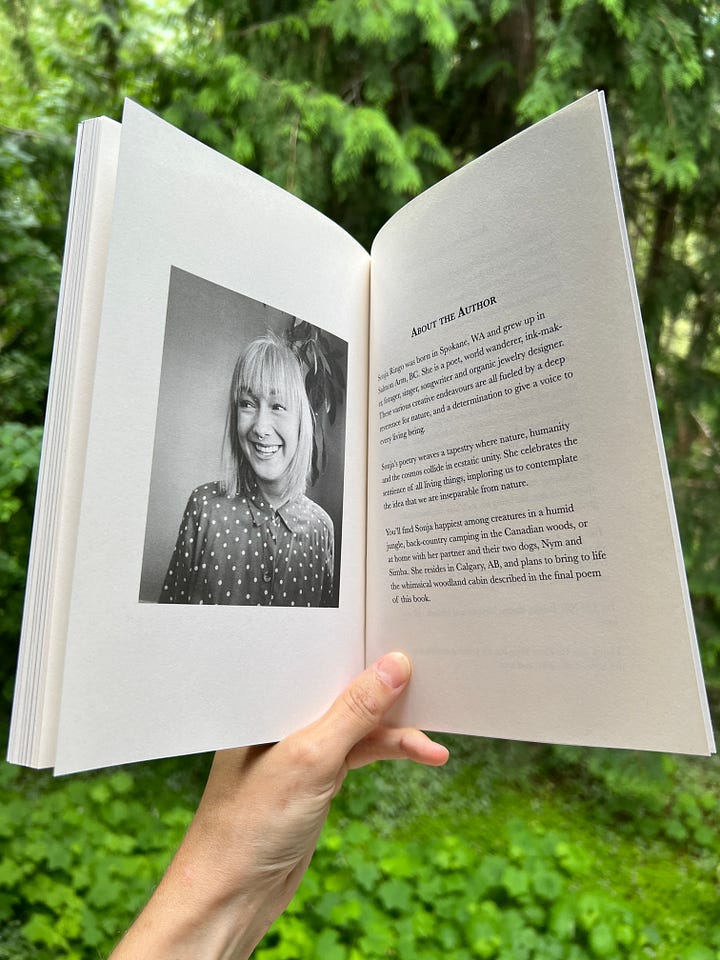
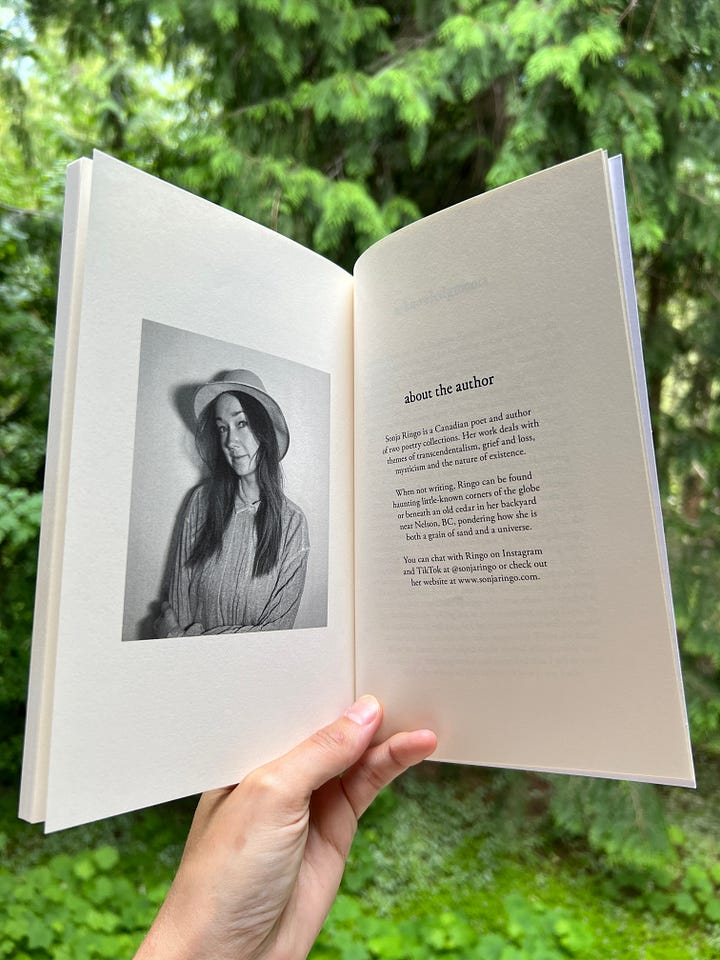
I took my author photos with a tripod and an iPhone13 pro, but you can hire a professional photographer if you’d like! It’s all up to you, boo <3 This is your circus!
step five: cover art
This next part is so much fun. Deciding on an artist and direction for your book’s front and back covers! For Where the Beetle Went for Lunch, I hired Morgan Handberg who is not only an incredibly talented artist & illustrator, but also my best friend. She painted the covers, as well as illustrations for each of the 5 chapters, using a combination of watercolour and acrylic paints. I’m so happy with what she created for me - she also made this timelapse of the cover being painted! 🎨

For mortal atlas, I painted the cover art myself using wild-foraged inks that I handcrafted. I love collecting nature’s ephemera to alchemize into bottles of feral pigment! Painting with these wild inks is a passion of mine, and it felt really satisfying to use this medium for my second book’s cover.
If you’re interested in ink-making, I learned by reading a wonderful book called Make Ink by Jason Logan from the
. I highly recommend subscribing to his Substack newsletter, The Colour Lab!You can acquire cover art for your collection by hiring a friend, doing it yourself, or perusing the internet and reaching out to an artist whose work you align with. Once you have cover art, you’ll be able to create the cover file! I used Adobe Illustrator for cover file creation, but you can also use InDesign and possibly even Canva [unsure because I haven’t done it with Canva myself].
Note that the book’s cover file is separate from the interior file mentioned in the previous step. This is also where you’ll include an ISBN which generally dwells on the back cover.
step six: publishing options
I love that you’ve read this far! I hope you feel excited! You have some decisions to make about publishing. There’s a plethora of pros and cons to both traditional publishing and self-publishing, which I’ll cover more in-depth in a future article. But this article and my experiences revolve around the latter. I’m often asked “Why did you choose to self-publish over the traditional route?” and the short answer is:
I heard that sometimes with traditional publishing you may not even get to choose your book’s cover. This may not always be true but it sent me running, as I am obsessively meticulous regarding the creative act of every single step in the book publishing process. I want to make all of the decisions myself.. there is no part of the book creation vortex that I am willing to hand over to someone else’s creative direction. I’ve likely now outed myself as a Capricorn, if that wasn’t already obvious.. anyways
I’m like if a girl was an author and also gollum.
If you’re like me and you want to be the CEO of your own publishing adventure, you have a couple of options within the self-pub realm. You can publish locally with a printing press [which I initially did for WTBWFL] and work with them to print a generally large quantity of your books up-front. I went with 4th Floor Press Inc. in Calgary, Canada, and printed about 500 copies for my launch.
I enjoyed working directly with the people at the printing press and choosing environmentally friendly/100% recycled paper, which aligns with my values and the book’s core message. Even though printing and paying for book copies up front is a financial risk, this was the right choice for me at the beginning. Note that if you’re deciding to order and store a pile of books in your house, you’ll also need an online eCommerce website so that you to sell those books to customers.
My online store is with Shopify, a company I actually worked for at the time. When you order a copy of WTBWFL on my site, I sign and gift-wrap your order with a custom stamp and wax seal, print a shipping label, then skip to the post office to drop it off. It’s truly a labour of love!
legend has it, every time someone orders from my website, a fairy is born 🧚♀️
♰⊹₊⋆𓆣⊹ ࣪ ˖♰
Alternatively, you can publish directly through a print-on-demand service like Amazon KDP, which I chose for mortal atlas and later also uploaded WTBWFL to. Both of my books now live on Amazon, which reduces financial risk because copies are only printed once they have been sold. It also means you don’t need to store boxes of books in your home, spend time on shipping, inventory, and order fulfillment, or manage and pay for an online store. You get to just wake up and find out that someone has a copy of your book en route to their home!
There are a plethora of companies to choose from when it comes to print-on-demand self-publishing, but I only have experience with Amazon KDP, which I have enjoyed though they increased their rates recently. When a copy of your book sells, they keep the printing cost as well a percentage-based royalty fee before depositing the remainder into your bank account once per month.
To recap, for this part of the process you can either:
Work with a local publishing press to print a large quantity of your book. You’ll need to store them in your house then sell & ship copies yourself though an online shop and/or in local markets
Upload your book file to a print-on-demand platform, letting them handle the inventory, shipping and fulfillment each time someone places an order
I ended up doing both options 1 and 2 for WTBWFL, and just option 2 for mortal atlas.
⭒ꨄ︎˚。📓. ݁₊ ⊹ ✎ᝰ
step seven: marketing your book baby
Marketing is the next step, since it’s time to plan your book launch!! Marketing is also something you’ll want to have been doing throughout this entire process. It kind of never ends, and is quite possibly the biggest part of this entire journey.
I’ve managed to gain a decent following on TikTok & Instagram, as well as more recently, here on Substack [thank you all so much, I love you]!! All of this has helped immensely with getting my books into peoples hands, hearts, and homes. There’s really no feeling like someone sharing with me that my book has touched them in some profound and/or special way 🥲 Update: You can find the next article in this series below:
All future guides on self-publishing will be for my paid subscribers, and I’d be smitten if you’d consider becoming one. It’s $8 USD monthly [cheaper than a smoothie in LA] and allows me to continue devoting time to writing poems, books, and this newsletter! This is quite literally my favourite thing to do <3
until next time: questions, comments, coming to conclusions
Is there anything I didn’t mention here that you’re wondering about? Burning questions still lingering in your fiery heart cave? Blow up the comments, make my day! I love chatting with you all!
PS. you might find the below videos useful:
A TikTok video where I deep-dive into the costs of self-publishing. If you’re not on the clock app, find it on Instagram here
Quick overview video on How to Self-Publish
Forever grateful that you’re here reading my words <3 If you’re shy about becoming a paid subscriber, but you want to do more than follow along, consider buying me a little trinket :)
You can order my books on amazon here, or find me shrieking into the void, sharing poems and sneak peeks of my upcoming book in these various portals:
♥ instagram
♥ tiktok
♥ youtube
♥ goodreads
♥ my website (poetry books & prints)
ᰔᩚ.° ༘☕⋆📜₊˚ෆ


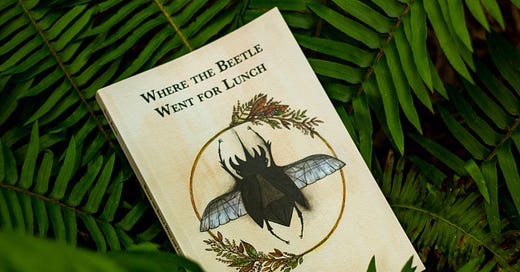



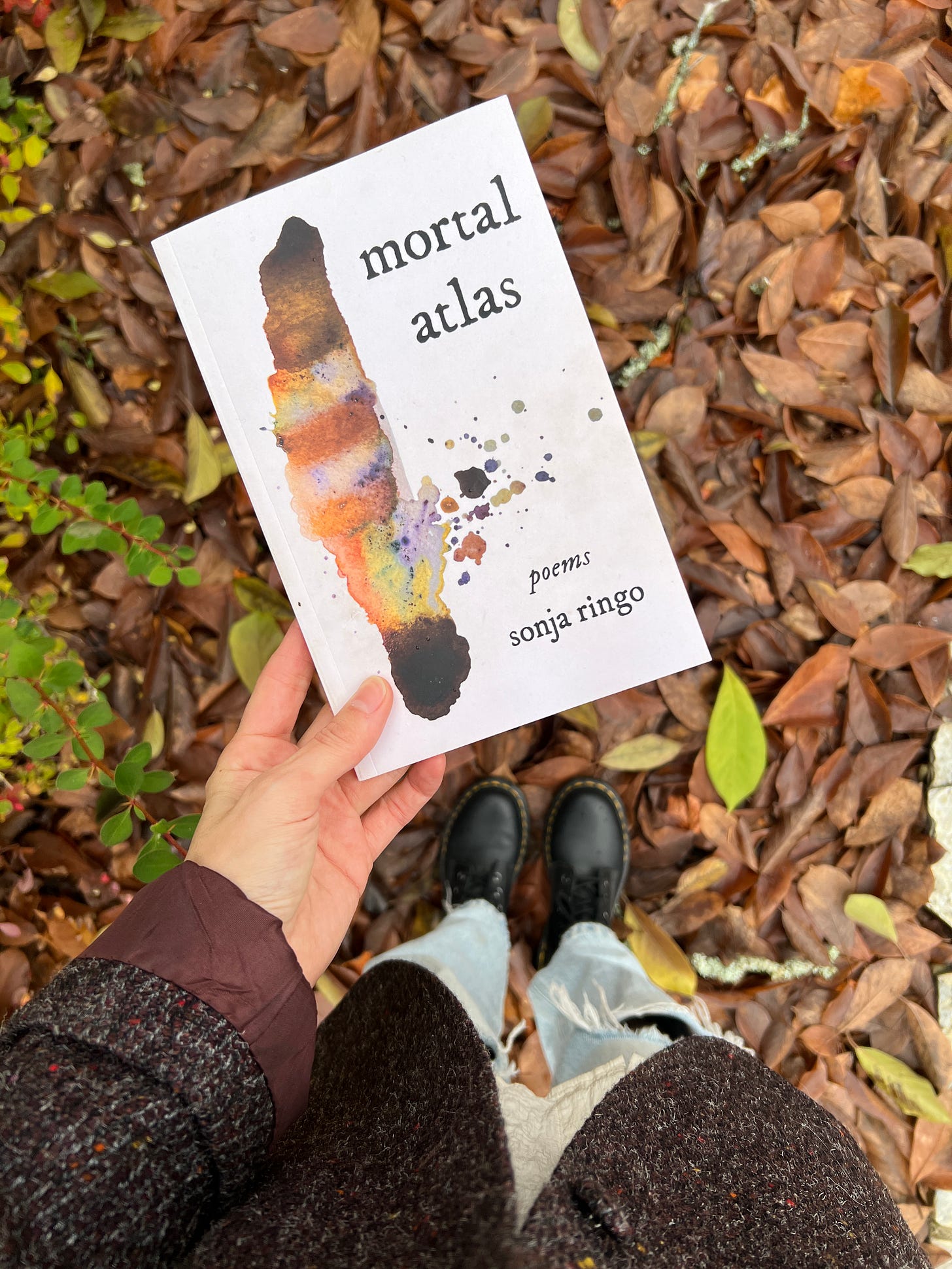
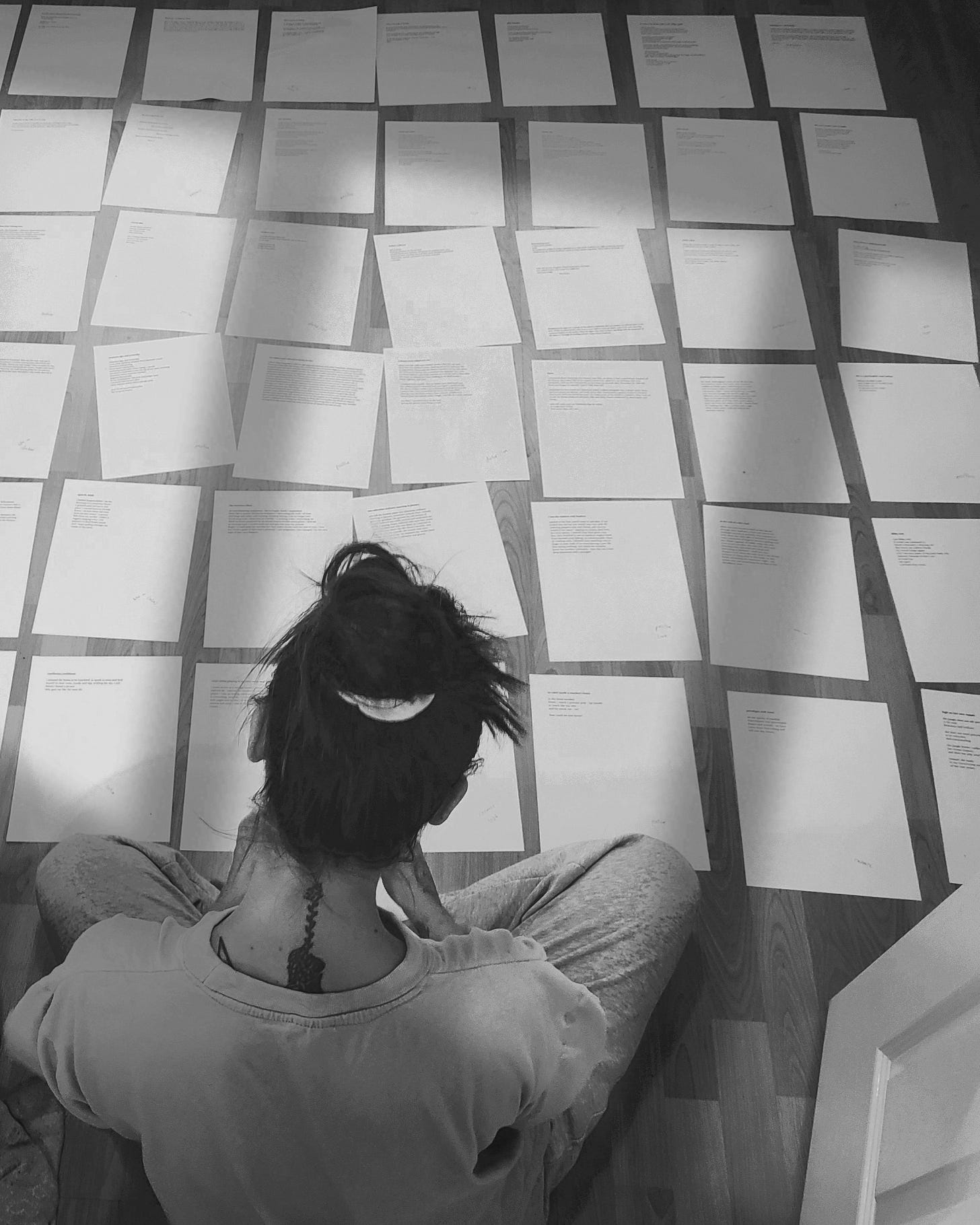

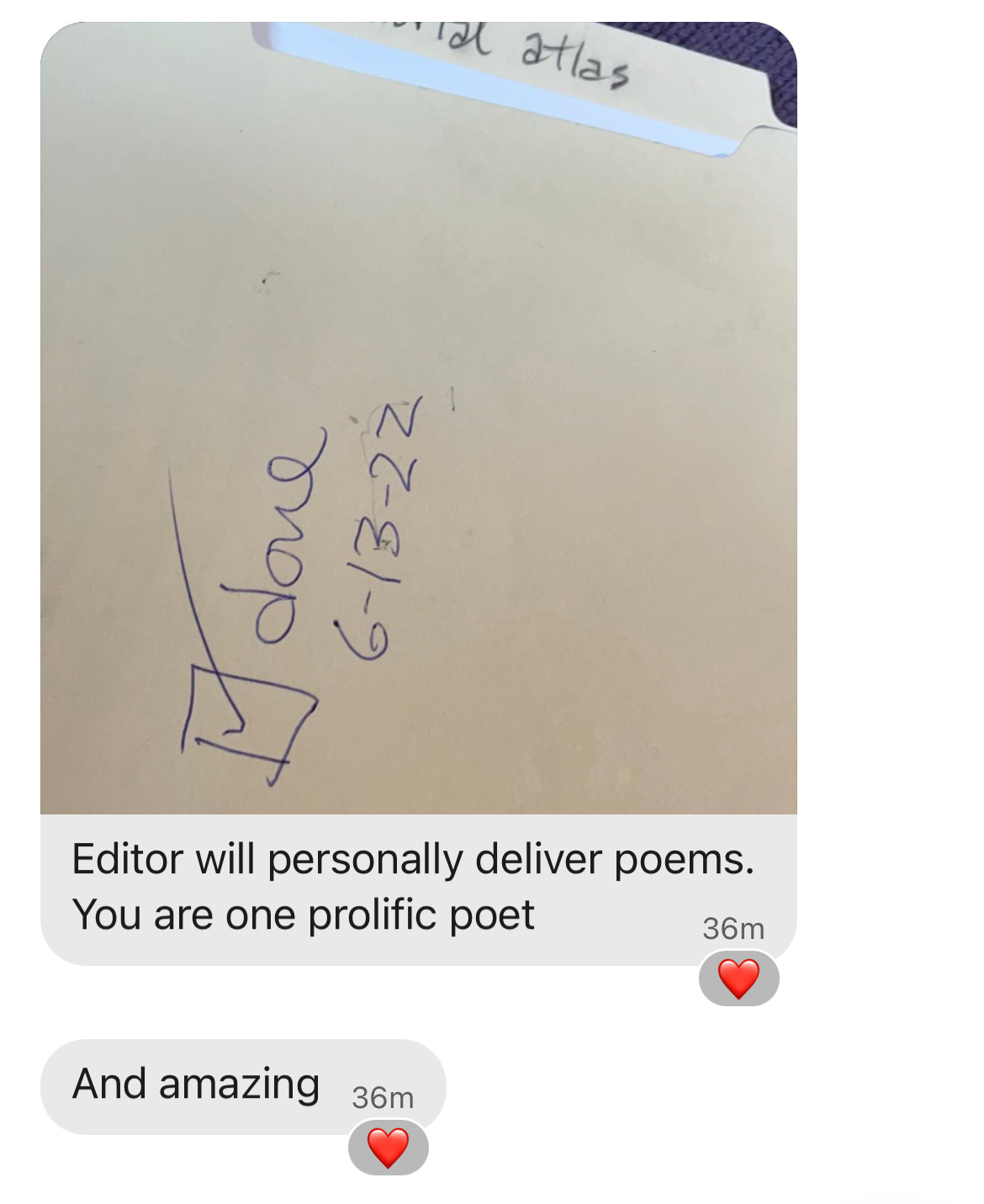
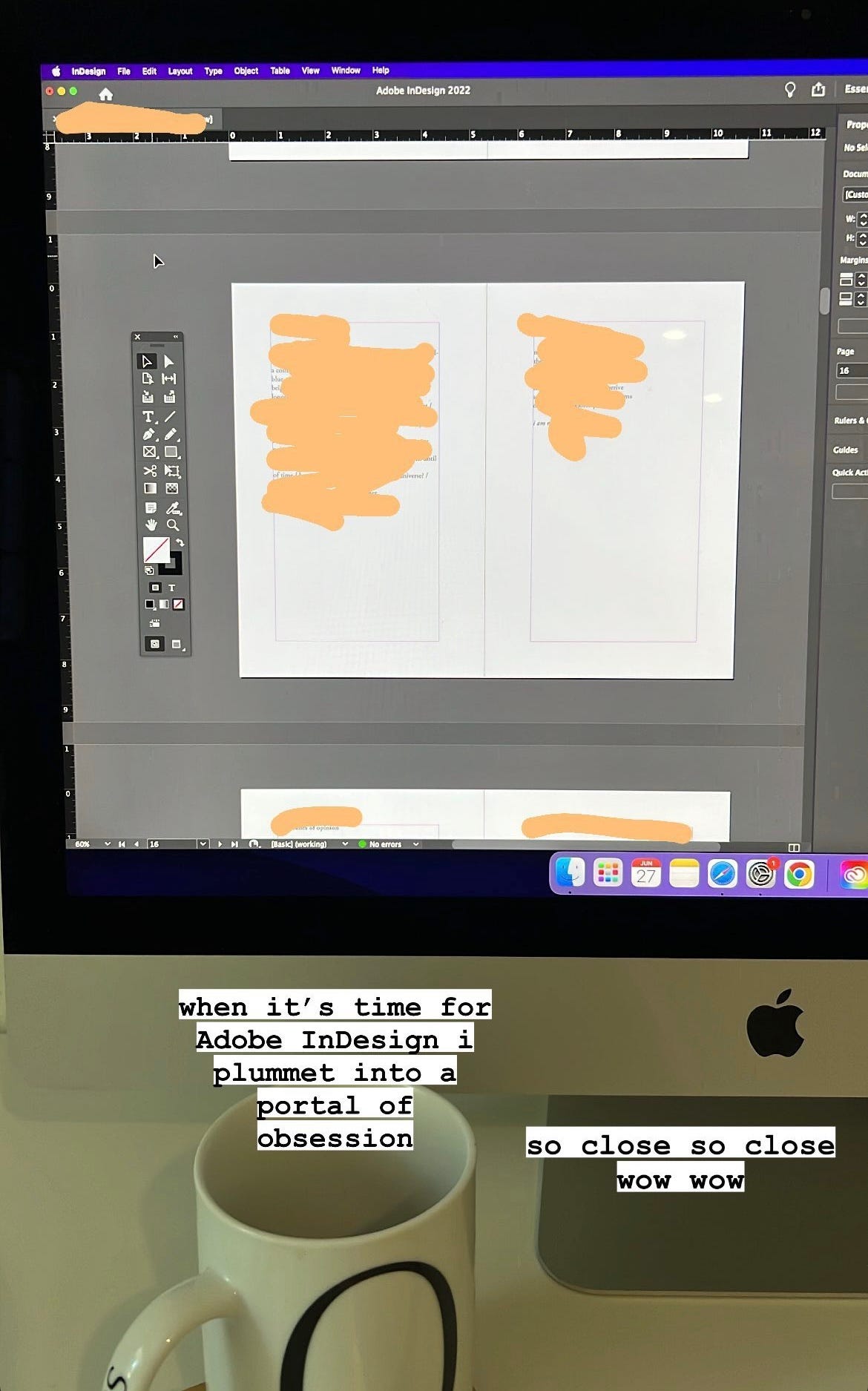

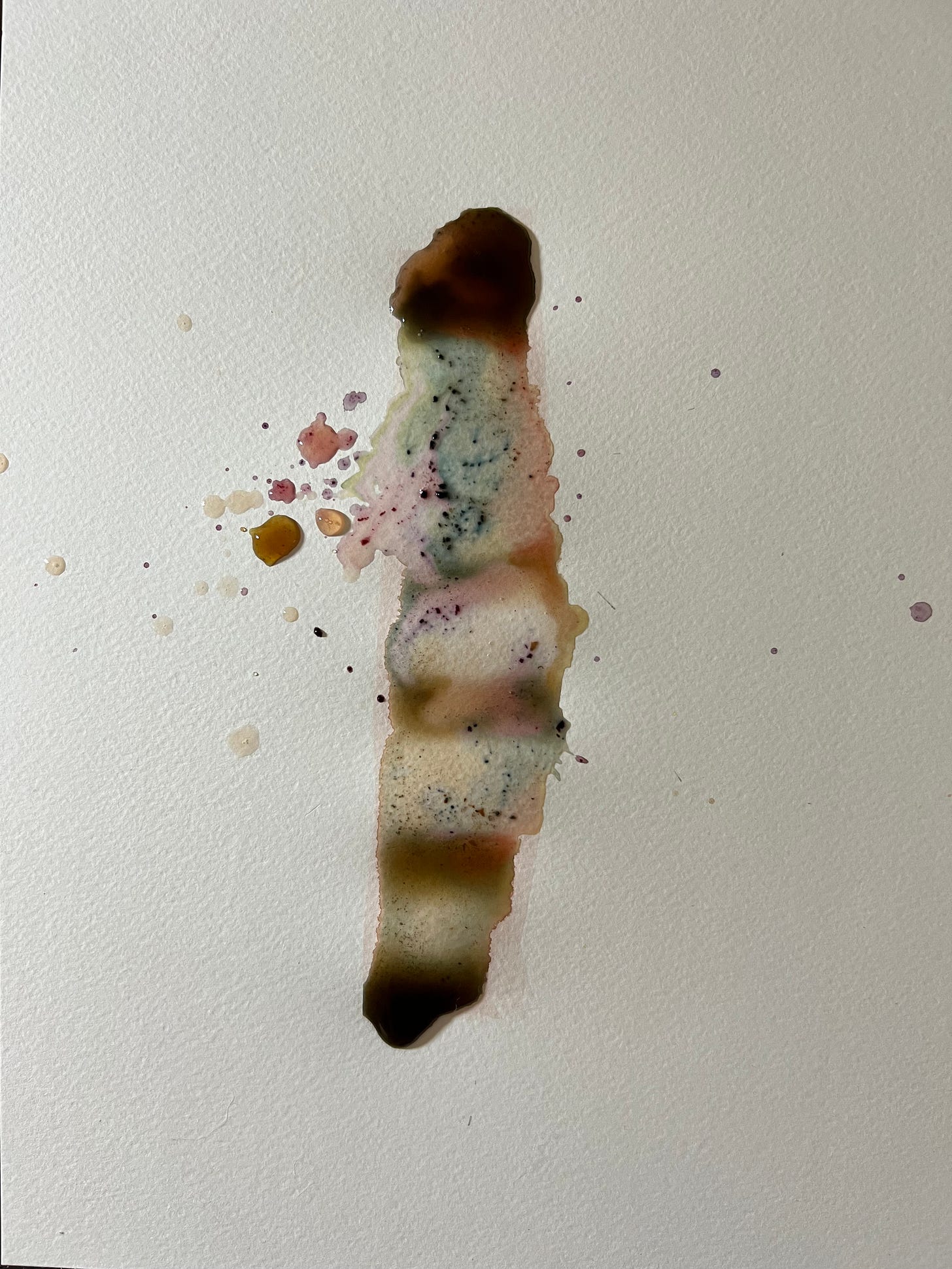
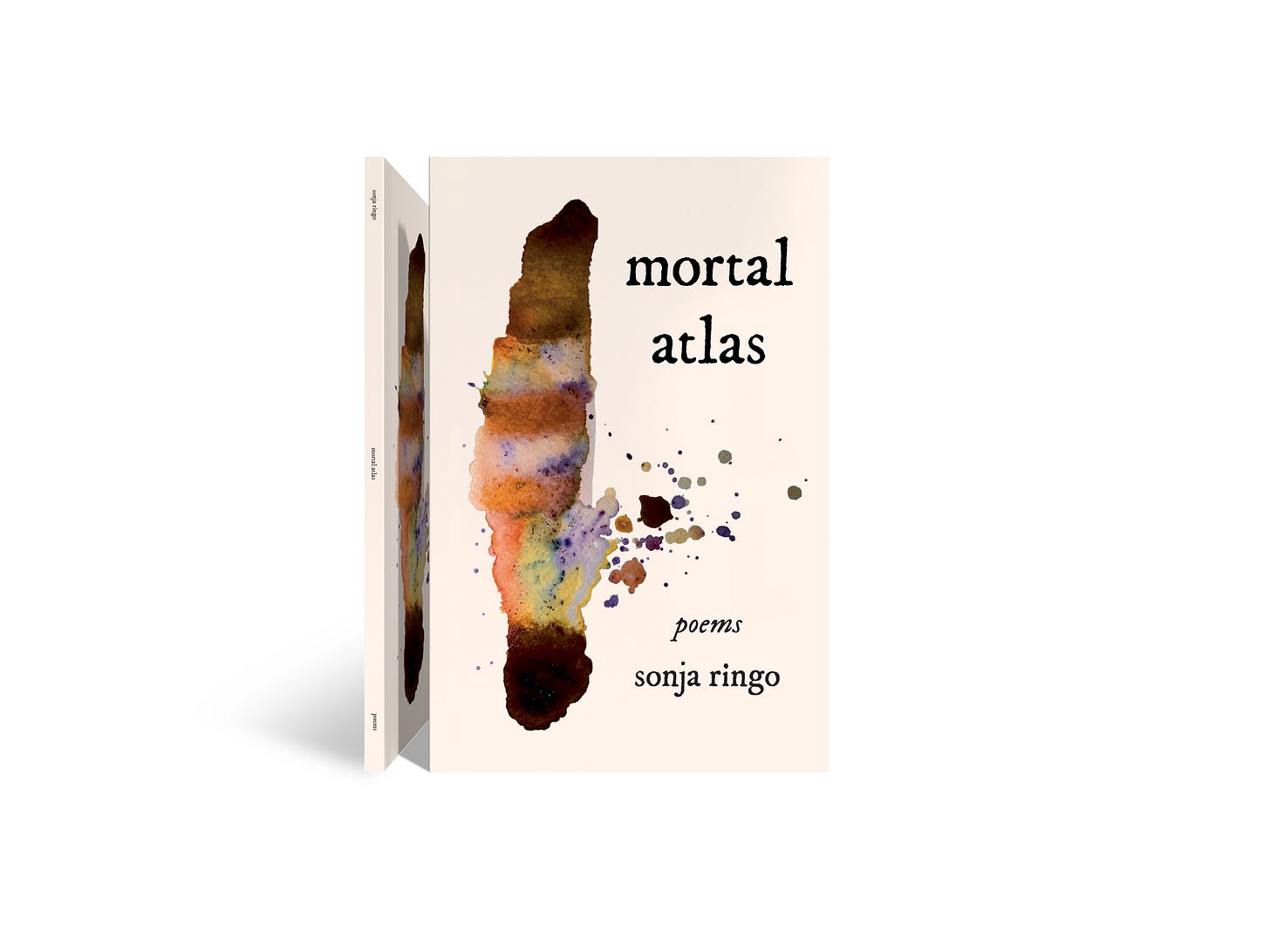

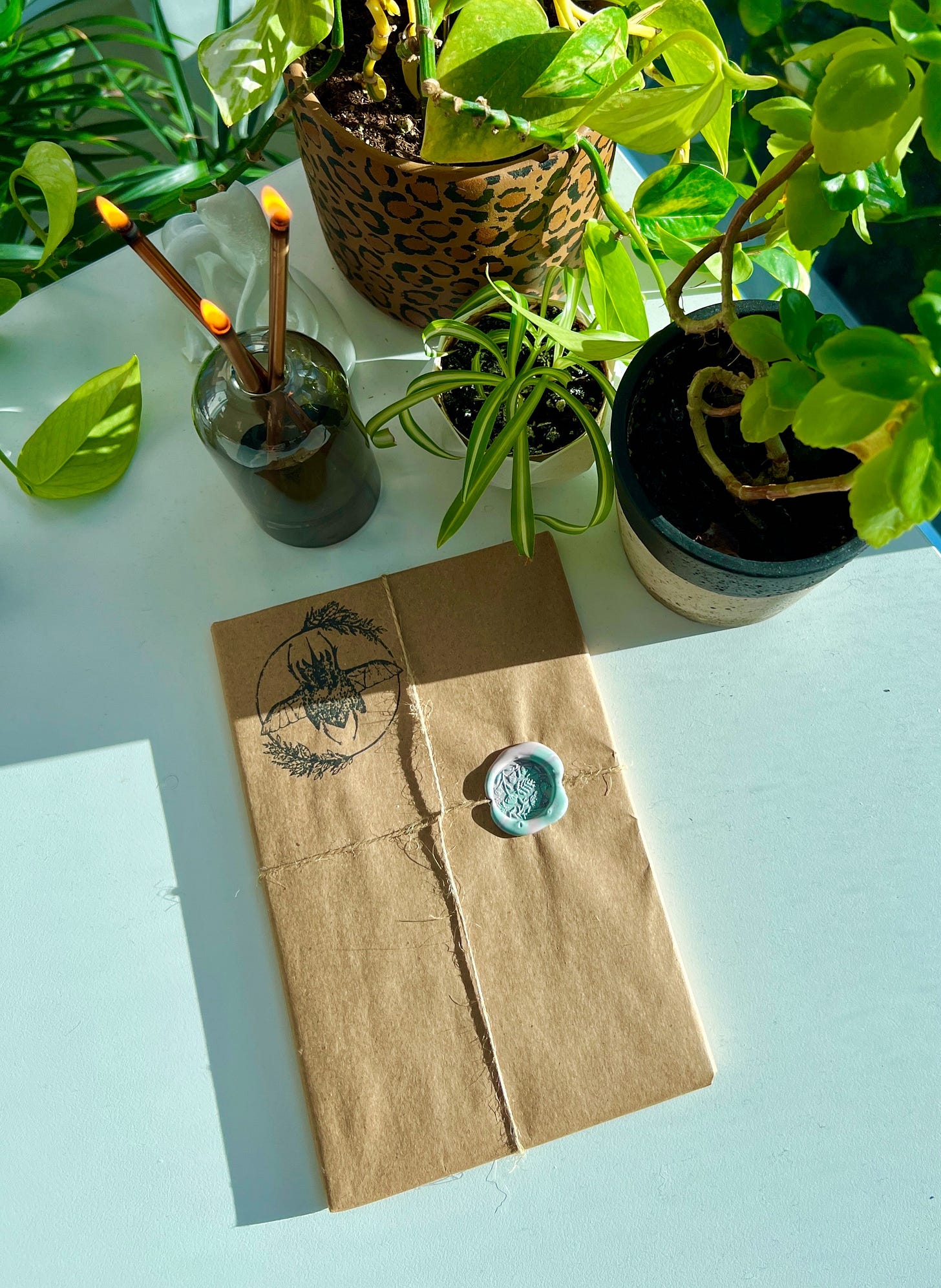
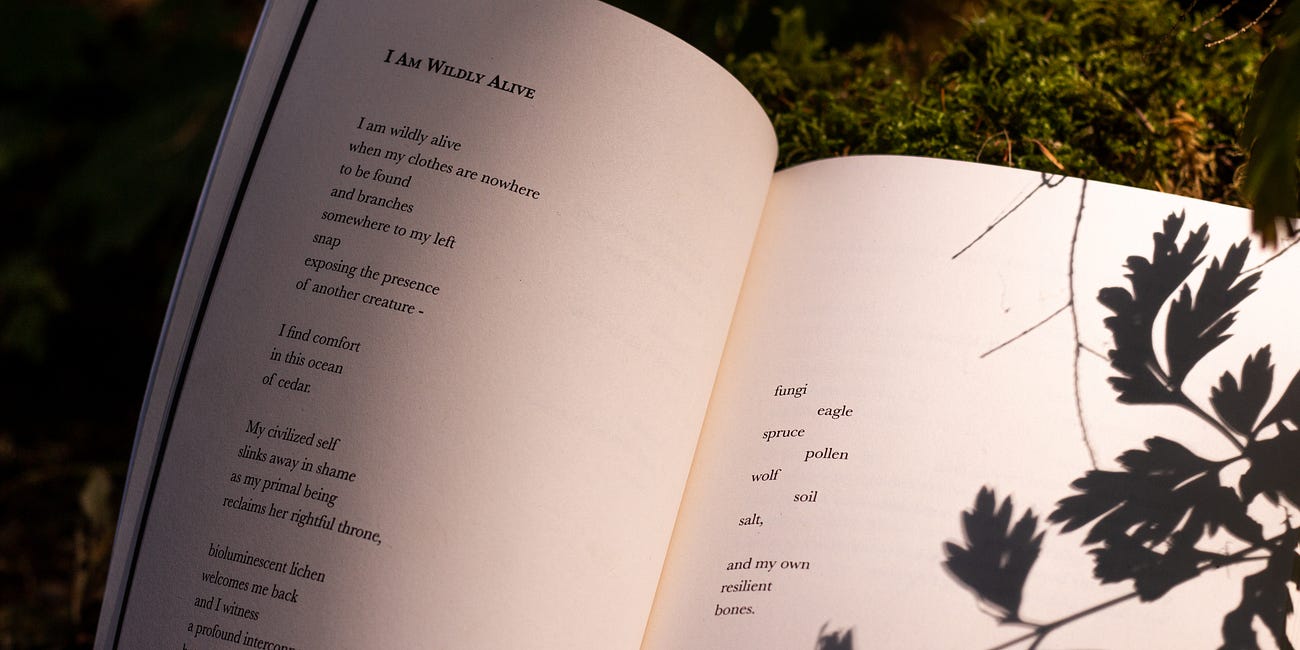
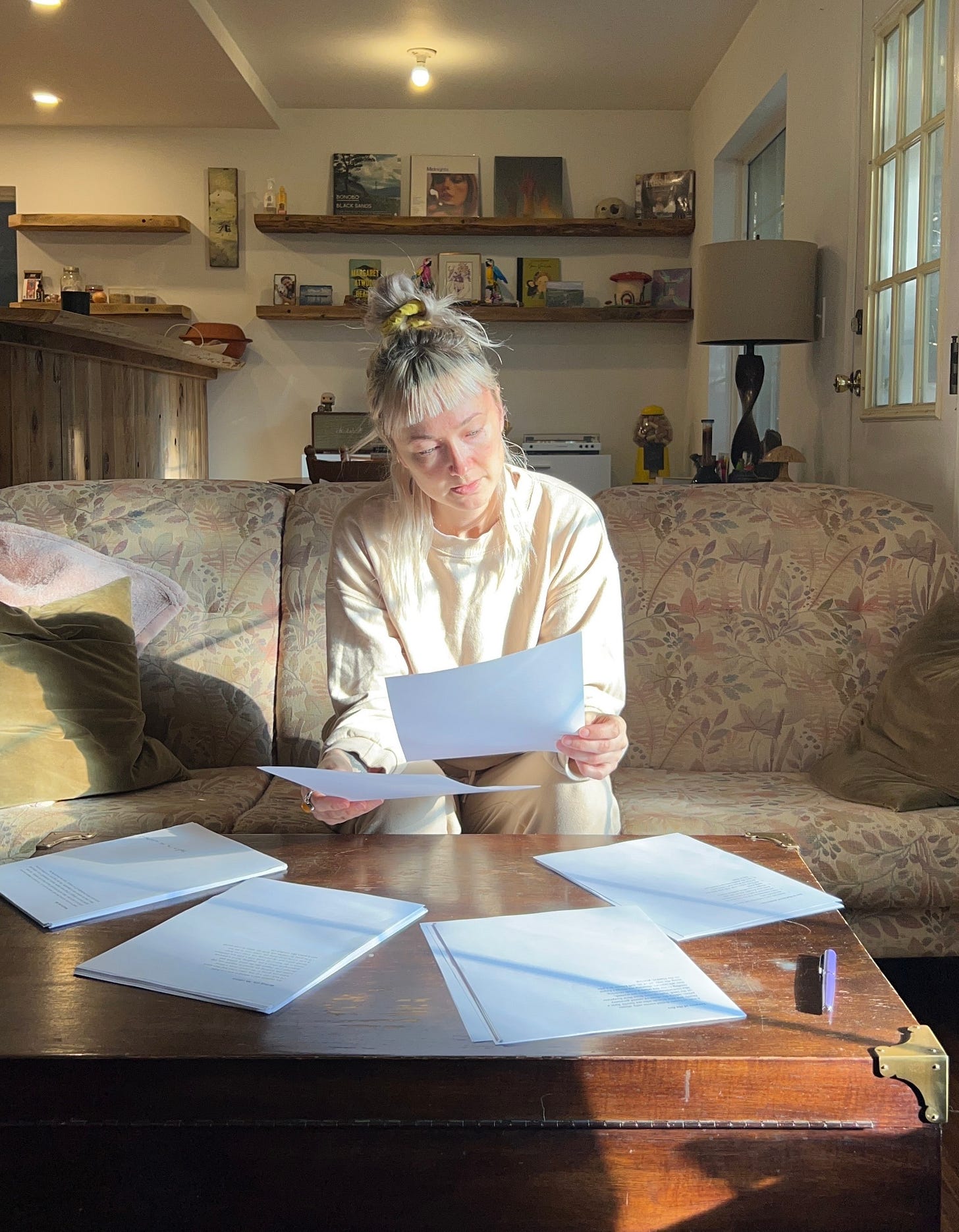
I don’t even see myself self-publishing a book of poetry, but this was so lovely to read! You have such a calming and friendly way of writing. :)
This is such a generous insight Sonja, thank you thank you